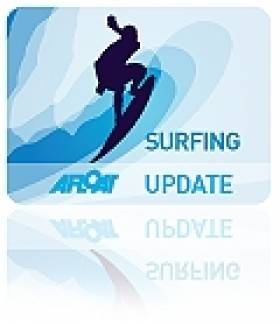Displaying items by tag: Christmas
Laser Dinghy Christmas Specials From CH Marine
As the days tick down to Christmas 2018, CH Marine Chandlery still has some special deals on Laser dinghies — but act fast as these offers are only available till Monday 24 December.
For just €6,950 (£6,185.50) including VAT you could have a standard Laser, Radial or 4.7 with XD rig and composite upper.
And that’s not all, as the price includes a trolley, top cover and foil bag, with sails fully numbered.
These popular packages have been selling fast and as of this morning (Thursday 20 December) there is only one Laser 4.7 deal remaining. If it’s what you’ve been looking for, don’t be disappointed this Christmas!
Be sure also to check out CH Marine’s daily deals on Facebook in the run-up to Santa’s arrival. Today you could save €70 on a Crewsaver Ergolift Offshore Lifejacket Auto 190N with light and hood.
Shop online at CHMarine.com or in store in Skibbereen, Cork and Newtownards — open from 9am to 2pm on Christmas Eve for any last-minute stocking-stuffers!
Make This Year’s Christmas One To Remember With Viking Marine
Christmas is less than six weeks away — but no need to fret, as Viking Marine has many wonderful gift ideas for all the sailors in your life.
Whether they’re only starting out or an ‘ancient mariner’, a dinghy enthusiast or yachting fanatic — you can find everything you’ll need for the perfect present in Viking Marine’s online gift guide.
To make your shopping experience even easier, Viking Marine has organised its guide by the type of sailor you’re looking to treat, whether that’s a dinghy sailor or racer, cruiser or offshore sailor.
Don’t miss the selection of stocking fillers for sailors of all stripes. And the new range open sea swimming gear from Orca will also appeal for those who brave the waters over winter.
A Festive Selection For Christmas At The Royal Irish Yacht Club
The Royal Irish Yacht Club has released its 2018 Christmas brochure, detailing events planned for the upcoming festive season.
Clubhouse dining options begin on Saturday 1 December and include a family lunch on Sunday 9, and a special seven-course ‘Taste of Christmas’ menu on Saturday 15.
Members can also enjoy an evening of carol singing with the Ryan family on Monday 10 December, with mulled wine and mincepies before supper in the dining room.
And for the younger members, Santa Claus himself will be visiting the club — but be sure to book your spot at the Wet Bar.
Viking Marine’s Advent Calendar Is In Full Swing
Viking Marine is four days into its Advent calendar on Facebook, highlighting a different gift idea for your favourite sailing enthusiasts each day until Christmas.
Stocking stuffers featured thus far include the new Gloma Nautica Rope Bracelets, Dexshell waterproof socks, Aquatic phone cases and 2018 sailing calendars.
Be sure to check out the Viking Marine Facebook page every day till 24 December for a new selection from their comprehensive list of Christmas gift ideas.
If you missed Viking Marine’s recent Black Friday specials, why not see what else is in store?
Coastguard Helps Santa Deliver Presents To Temple Street Hospital
#Xmas - The Irish Coast Guard responded to a surprising distress call this week as a man reported falling off his sleigh over Dollymount Strand.
But this was no hoax call, as the Irish Examiner reports.
And the VIP, in his distinctive red suit, was given a special escort into the city centre, where coastguard staff helped him deliver presents to children in Temple Street Hospital over the Christmas period.
The Irish Examiner has more on the story HERE.
#RNLI - Christmas came early at Donaghadee Primary School yesterday (Tuesday 24 November) as children enjoyed a reading of an RNLI festive story.
Accompanied by Rookie the RNLI Reindeer and coxswain Philip McNamara, Donaghadee RNLI’s deputy second coxswain John Ashwood read The Big Christmas Rescue to a group of pupils in Primary One.
The kids were able to hear about the station’s all-weather lifeboat and learned about the lifesaving service that the RNLI provides.
The story is set on a wet and windy Christmas Eve night. But when Santa crashes his sleigh in the sea, volunteer RNLI lifeboat crew members go to the rescue.
The Big Christmas Rescue children’s book is also customisable, making it a perfect seasonal gift.
It can be personalised to put young readers at the centre of a magical festive story, and the gift-giver can select the name, gender and skin tone of the child in the story, making it a truly unique present for their own special little person.
"I really enjoyed reading the story to the children," said Ashwood. "They all seemed to enjoy the book and it was great to tell the children about the lifesaving service we provide at the RNLI.
"The Big Christmas Rescue is a really beautiful book and it’s the perfect gift for children this Christmas. I love the way the book can be personalised, putting readers at the heart of the story. Importantly, all profits from sales of the book will help the RNLI continue to save lives at sea."
To order a personalised copy of The Big Christmas Rescue, go to RNLISHOP.org/BigRescue. The last order date for the book to guarantee delivery before Christmas is Sunday 13 December 2015.
All profits from book sales will be used to fund the charity’s lifesaving services, delivered by volunteer lifeboat crews and lifeguards who between them rescued 10,496 people last year – more than 1,400 across the island of Ireland alone.
Dashing Through the Surf On a No-Horse Open Wave!
#SURFING - Here's a little something festive with four weeks to go till Christmas, as Afloat alum Markham Nolan highlights this wonderful photo of Santa Claus riding the waves on a stand-up paddle board via surfing website Magicseaweed.
The shot was captured by Rich Murphy over the weekend in Dublin, and not only shows Santa getting to trips with a new form of transport - but that even the east coast of Ireland has its fair share of quality swells.
Dun Laoghaire Lifeboat to Mark Christmas Eve Tragedy
#LIFEBOAT – The crew of the RNLI lifeboat station at Dun Laoghaire will hold the traditional ceremony to remember the 15 volunteers that died on service in 1895 on Christmas Eve and for all lives lost at sea in the past year.
A short ceremony will be held at the lighthouse end of the East Pier at mid-day on Christmas Eve that will include music, an ecumenical blessing, a contemporary newspaper account of the 1895 tragedy and a piped lament. Both RNLI lifeboats stationed at Dun Laoghaire will launch and the crews will lay wreaths at sea.
The ceremony is an annual Christmas Eve tradition that remembers the lives of the 15 volunteer crew that died when their lifeboat capsized in gale force winds while attempting to rescue those on board the SS Palme that had run aground off Blackrock, Co. Dublin. All lives lost at sea in 2011 will also be included in the ceremony.
A special replica of the monument erected at the RNLI head-quarters in Poole, Dorset to remember all lifeboat crews lost while on duty, including the 15 Dun Laoghaire crew from 1895 will be presented to the station by Mr. Terence Johnson, Chairman of the Lifeboat management Group and will be on permanent display at the station.
"This event has become part of our local Christmas community tradition," said Stephen Wynne, Lifeboat Operations Manager at Dun Laoghaire. "Whether a descendant of the original lifeboat crew or simply looking for something alternative on Christmas Eve, everyone and their families are welcome to join us."
Fastnet Ferry Figures Smash 2010 Target
The passenger figure represents four-times the capacity of the Liberty Stadium, Swansea which is to host the rugby Heineken Cup clash between Swansea Neath Ospreys and Munster on Saturday 18 December.
The 10-hour ferry service operated by Fastnet Line also carried 31,000 vehicles and statistics suggest a significant boost for the Swansea Bay economy with about 40% of all passengers so far travelling from Cork to the south Wales region. The route is served by the MV Julia which had been sailing in the Baltic. The 1982 built vessel is capable of carrying more than 1,800 passengers and 400 cars.
Fastnet Line will run all-year-round in 2011 and has set a revised target of 120,000 passengers.
On a seasonal note, Christmas gift vouchers are available from Fastnet Line, for more information logon HERE


































































